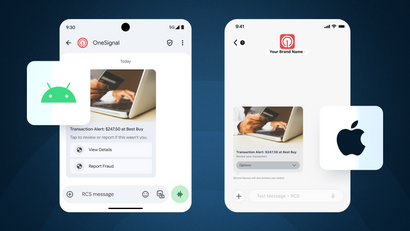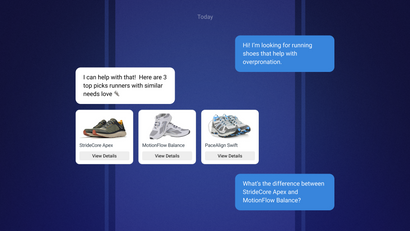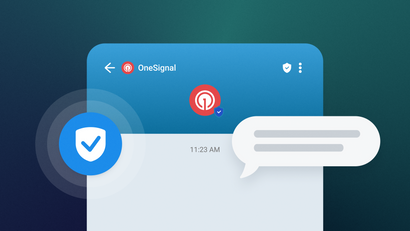Sender reputation is a silent yet powerful force that can make or break your campaigns. It's the behind-the-scenes score that determines whether your carefully crafted emails land in the inbox, the dreaded spam folder, or get blocked entirely. For email marketers, mastering sender reputation is crucial for ensuring your messages reach and resonate with your audience.
In this blog post, we dive into the concept of sender reputation, explore its impact on your email marketing efforts, and provide actionable steps to build and maintain a strong sender reputation.
What is Sender Reputation?
Sender reputation is like your email domain’s credit score. It’s a score assigned to your email-sending domain and IP address based on factors that reflect the quality and trustworthiness of your email practices. Internet Service Providers (ISPs) and email providers use this score to decide if your emails deserve to be in the inbox, the spam folder, or blocked entirely.
Key Factors Influencing Sender Reputation
- Spam Complaints: When recipients mark your email as spam, it’s a clear signal to ISPs that your emails might be unwanted or harmful.
- Bounce Rates: High bounce rates due to invalid addresses can damage your reputation. Keeping a clean email list is vital.
- Engagement Rates: High open and click-through rates (CTR) show that recipients value your emails. Low engagement can suggest the opposite.
- Spam Traps: These are email addresses set up to catch spammers. Hitting a spam trap can severely harm your reputation.
- Frequency and Volume: Sudden spikes in email volume or frequent sending can raise red flags. ISPs prefer consistent sending patterns.
- Content Quality: Spammy language, excessive links, and misleading subject lines can trigger spam filters and damage your reputation.
Why Sender Reputation Matters
A strong sender reputation is your ticket to the inbox. Here’s why it’s essential:
- Inbox Placement: A good reputation means your emails are more likely to land in the inbox, not the spam folder.
- Deliverability: Ensuring your emails are delivered successfully is crucial for reaching your audience.
- Engagement: Emails that make it to the inbox are more likely to be opened, read, and acted upon, boosting engagement.
- Brand Trust: Consistently reaching the inbox helps build trust and loyalty with your audience.
How to Build and Maintain a Strong Sender Reputation
1. Authenticate Your Emails
Implement email authentication protocols like SPF (Sender Policy Framework), DKIM (DomainKeys Identified Mail), and DMARC (Domain-based Message Authentication, Reporting & Conformance). These help verify that your emails are genuinely from your domain and prevent spoofing.
2. Maintain a Clean Email List
Regularly clean your email list to remove invalid or inactive addresses. Use double opt-in methods to ensure recipients genuinely want your emails. Avoid buying email lists, as they often contain outdated or unverified addresses.
3. Monitor Engagement Metrics
Track key engagement metrics such as open rates, click-through rates, and conversion rates. Use this data to refine your content and sending strategies. Segment your audience to send more relevant and personalized content, boosting engagement.
4. Manage Bounce Rates
Regularly monitor and manage bounce rates. Remove hard bounces (invalid addresses) immediately. Keep an eye on soft bounces (temporary issues) and manage them accordingly.
5. Avoid Spam Traps
Ensure your email list is organically grown and comes from legitimate sources. Regularly clean your list and use email validation services to detect and remove potential spam traps. For more tips and best practices, check out our article on how to identify and avoid spam traps.
6. Optimize Sending Frequency
Find the right balance for your email sending frequency. Avoid overwhelming recipients with too many emails in a short period. Establish a consistent and predictable sending schedule that honors user preferences.
7. Create High-Quality Content
Craft engaging and relevant content that provides value to your recipients. Avoid spammy language, excessive symbols, and misleading subject lines. Use clear, concise language and ensure your emails are well-designed and mobile-friendly.
For more email writing best practices, check out the following articles:
- 10 Tips for Writing Good Email Subject Lines and Preheaders
- How to Write and Structure Captivating Marketing Emails
- The Anatomy of a Successful Marketing Email
8. Monitor Sender Reputation
Use tools and services to monitor your sender reputation regularly. Platforms like Google Postmaster Tools, Sender Score by Validity, and Microsoft SNDS provide insights into your reputation and help identify areas for improvement.
9. Solicit Feedback
Encourage recipients to provide feedback on your emails. Include options for them to update preferences or unsubscribe if they no longer wish to receive your emails. Listening to your audience and making adjustments based on feedback can improve engagement and reduce complaints.
Choose a Trustworthy and Reliable Email Provider
By understanding the factors that influence sender reputation and implementing best practices, you can enhance deliverability, increase engagement, and build lasting relationships with your subscribers. Your email provider can be instrumental in helping you maintain good email hygiene and nurturing brand trust.
OneSignal provides built-in analytics and segmentation options, so it's easy to target your messaging and ensure that each email resonates with its intended audience. We also make it easy to handle user consent and opt-ins, manage unsubscribes, and maintain regulatory compliance, so you're always aligned with industry best practices. For new email senders, our auto warm-up feature enables you to establish a positive reputation for a new or inactive sending domain and build trust with ISPs from day one.
Get Started for Free



